Abstract
Augmentin (Beecham Laboratories, Bristol, Tenn.), a combination drug consisting of two parts amoxicillin to one part clavulanic acid and a potent beta-lactamase inhibitor, was evaluated in vitro in comparison with ampicillin or amoxicillin or both for its inhibitory and bactericidal activities against selected clinical isolates. Regression analysis was performed and tentative disk diffusion susceptibility breakpoints were determined. A multicenter performance study of the disk diffusion test was conducted with three quality control organisms to determine tentative quality control limits. All methicillin-susceptible staphylococci and Haemophilus influenzae isolates were susceptible to Augmentin, although the minimal inhibitory concentrations for beta-lactamase-producing strains of both groups were, on the average, fourfold higher than those for enzyme-negative strains. Among the Enterobacteriaceae, Augmentin exhibited significantly greater activity than did ampicillin against Klebsiella pneumoniae, Citrobacter diversus, Proteus vulgaris, and about one-third of the Escherichia coli strains tested. Bactericidal activity usually occurred at the minimal inhibitory concentration. There was a slight inoculum concentration effect on the Augmentin minimal inhibitory concentrations. On the basis of regression and error rate-bounded analyses, the suggested interpretive disk diffusion susceptibility breakpoints for Augmentin are: susceptible, greater than or equal to 18 mm; resistant, less than or equal to 13 mm (gram-negative bacilli); and susceptible, greater than or equal to 20 mm (staphylococci and H. influenzae). The use of a beta-lactamase-producing organism, such as E. coli Beecham 1532, is recommended for quality assurance of Augmentin susceptibility testing.
Full text
PDF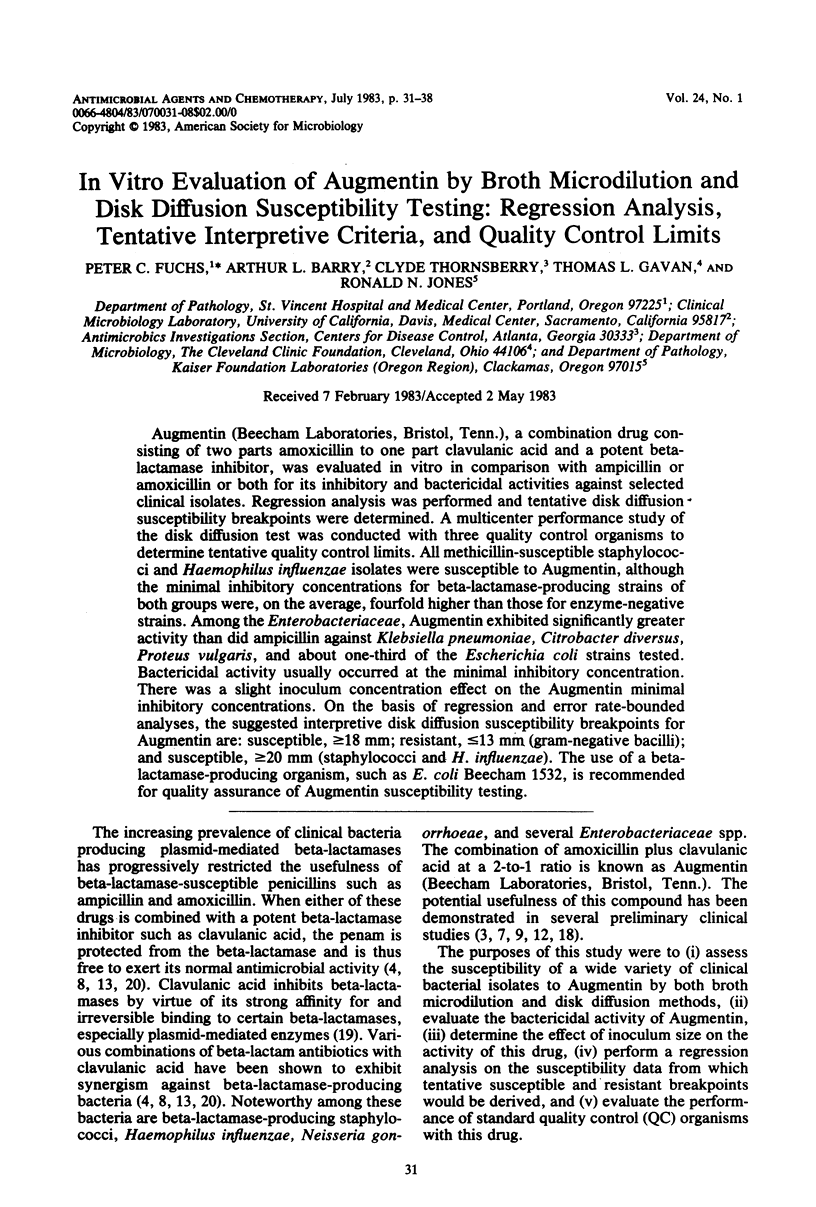
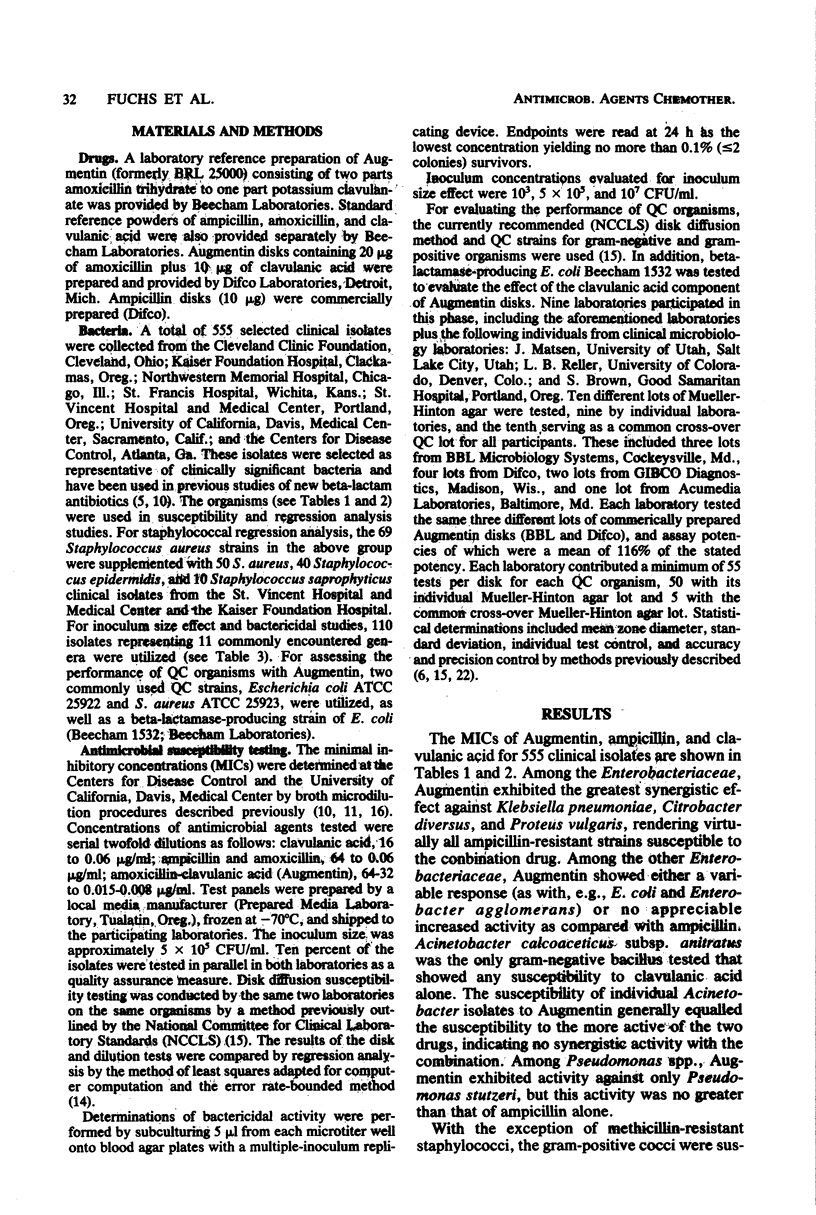
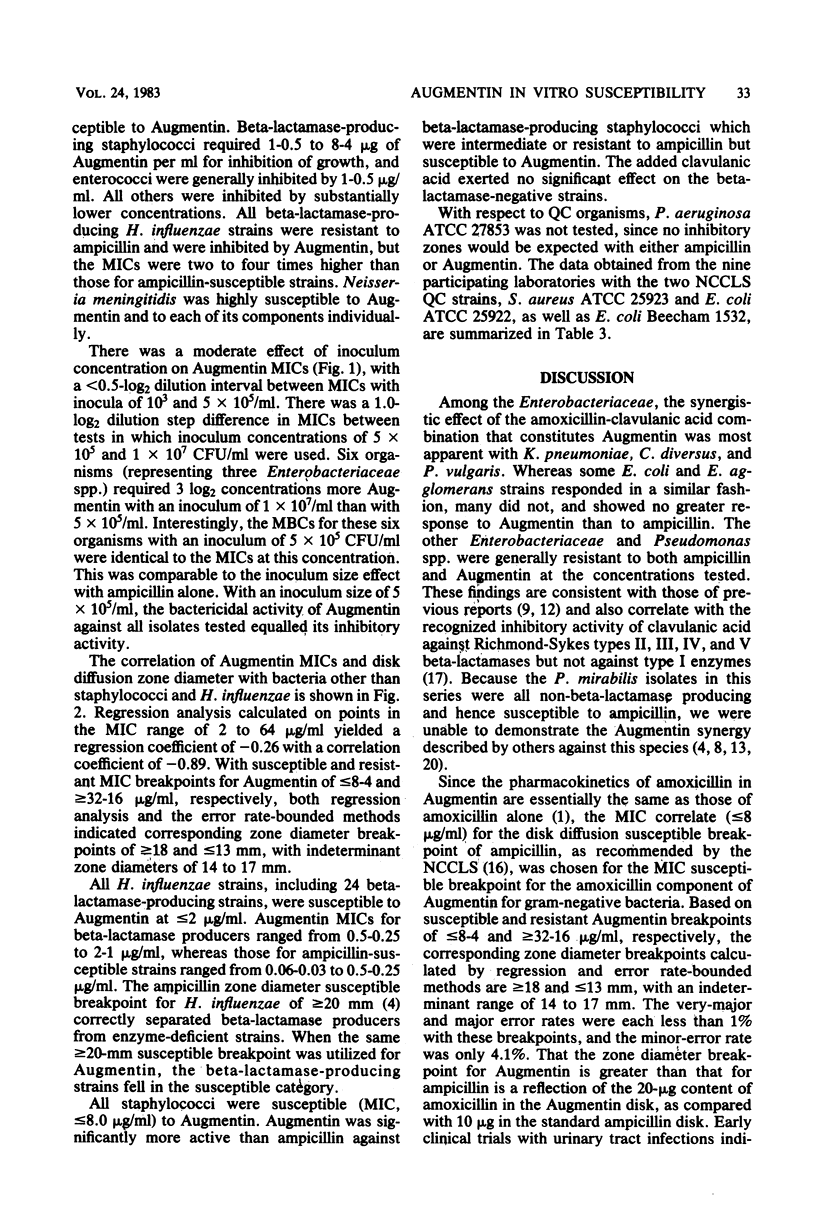
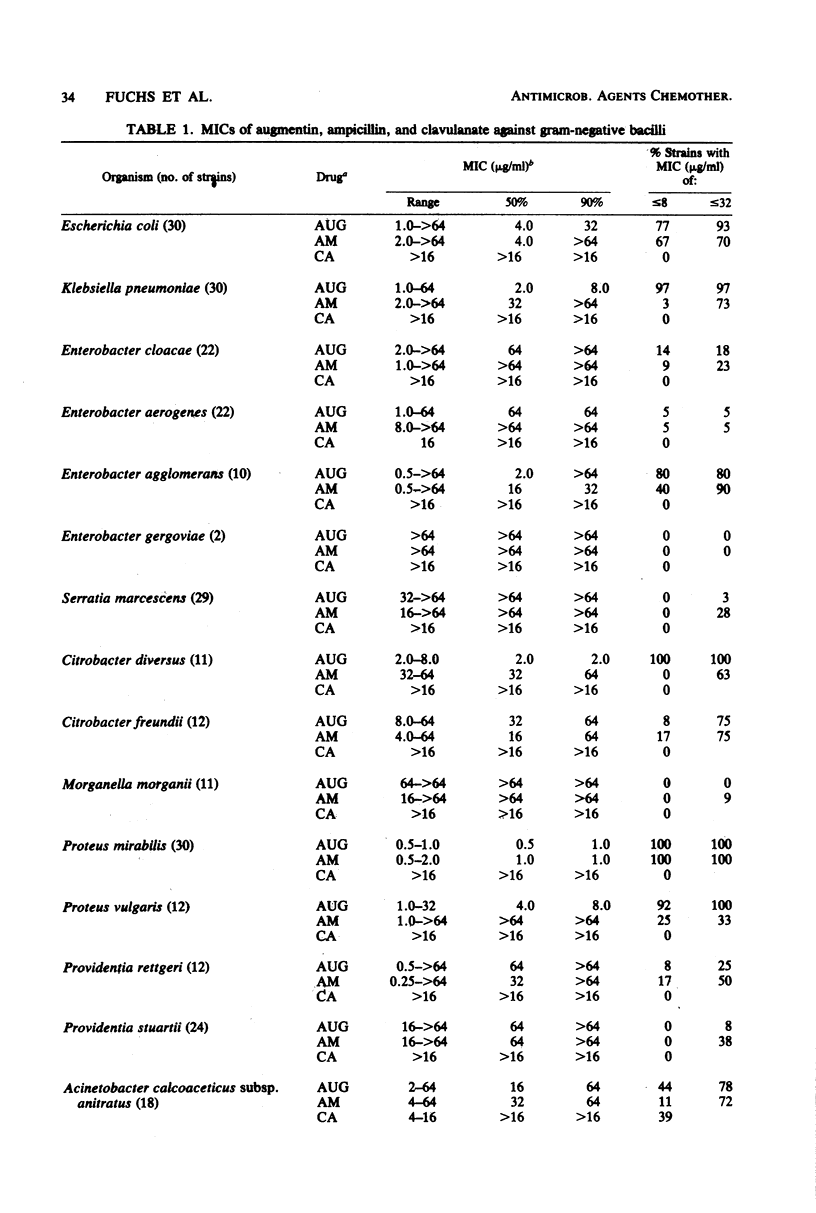
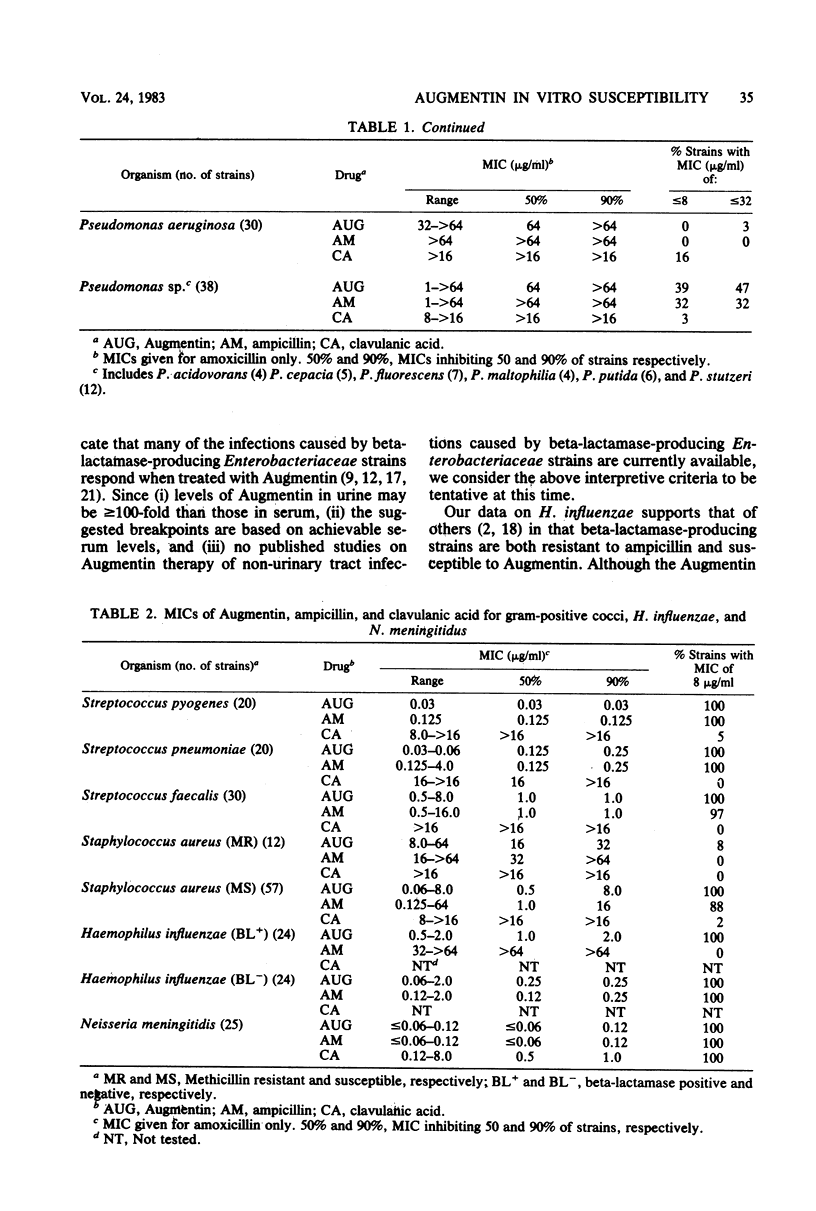
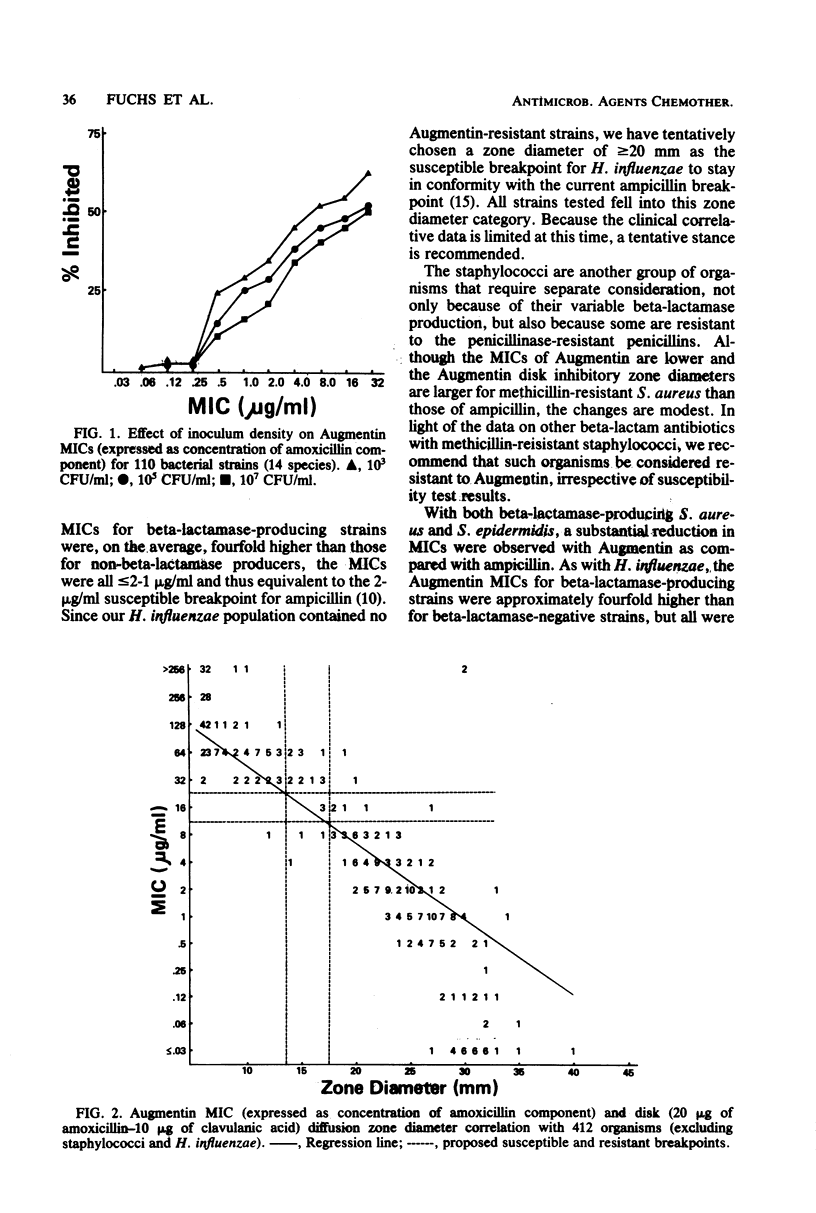
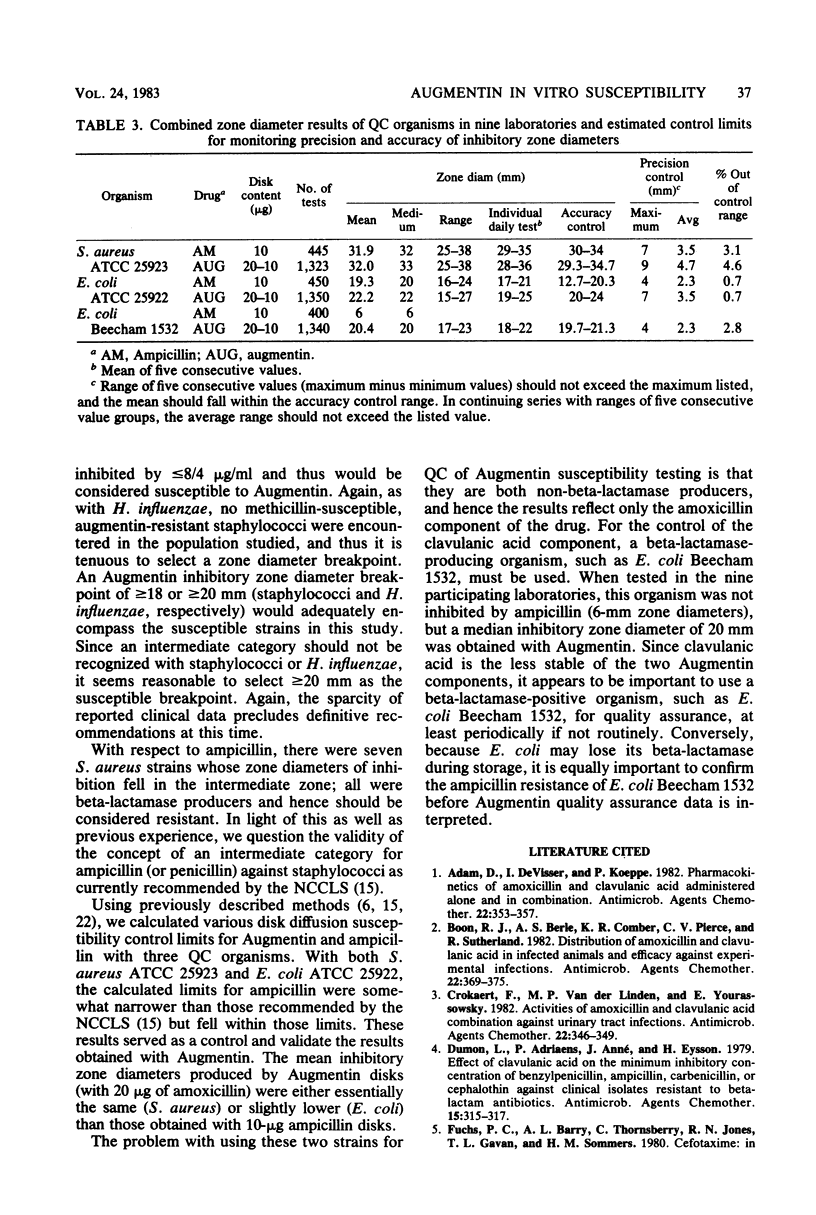
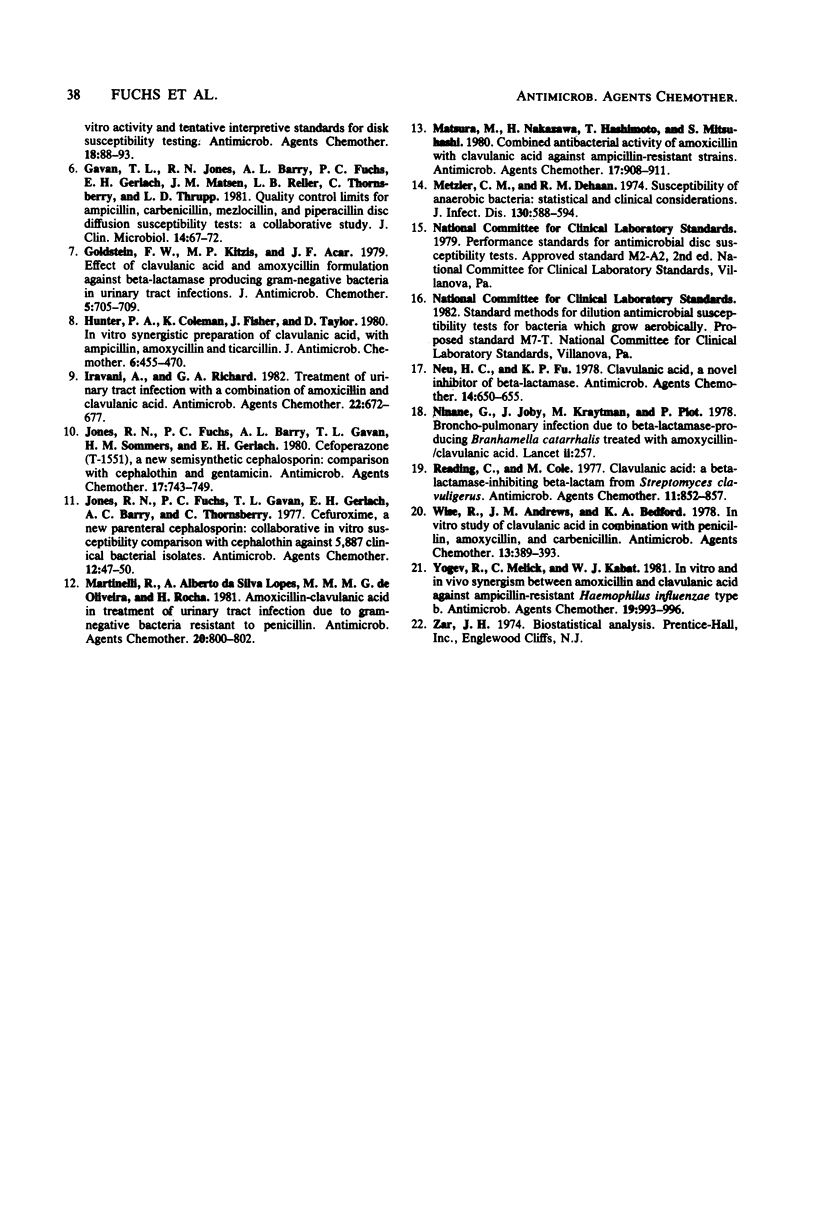
Selected References
These references are in PubMed. This may not be the complete list of references from this article.
- Adam D., de Visser I., Koeppe P. Pharmacokinetics of amoxicillin and clavulanic acid administered alone and in combination. Antimicrob Agents Chemother. 1982 Sep;22(3):353–357. doi: 10.1128/aac.22.3.353. [DOI] [PMC free article] [PubMed] [Google Scholar]
- Boon R. J., Beale A. S., Comber K. R., Pierce C. V., Sutherland R. Distribution of amoxicillin and clavulanic acid in infected animals and efficacy against experimental infections. Antimicrob Agents Chemother. 1982 Sep;22(3):369–375. doi: 10.1128/aac.22.3.369. [DOI] [PMC free article] [PubMed] [Google Scholar]
- Crokaert F., van der Linden M. P., Yourassowsky E. Activities of amoxicillin and clavulanic acid combinations against urinary tract infections. Antimicrob Agents Chemother. 1982 Aug;22(2):346–349. doi: 10.1128/aac.22.2.346. [DOI] [PMC free article] [PubMed] [Google Scholar]
- Dumon L., Adriaens P., Anné J., Eyssen H. Effect of clavulanic acid on the minimum inhibitory concentration of benzylpenicillin, ampicillin, carbenicillin, or cephalothin against clinical isolates resistant to beta-lactam antibiotics. Antimicrob Agents Chemother. 1979 Feb;15(2):315–317. doi: 10.1128/aac.15.2.315. [DOI] [PMC free article] [PubMed] [Google Scholar]
- Gavan T. L., Jones R. N., Barry A. L., Fuchs P. C., Gerlach E. H., Matsen J. M., Reller L. B., Thornsberry C., Thrupp L. D. Quality control limits for ampicillin, carbenicillin, mezlocillin, and piperacillin disk diffusion susceptibility tests: a collaborative study. J Clin Microbiol. 1981 Jul;14(1):67–72. doi: 10.1128/jcm.14.1.67-72.1981. [DOI] [PMC free article] [PubMed] [Google Scholar]
- Goldstein F. W., Kitzis M. D., Acar J. F. Effect of clavulanic acid and amoxycillin formulation against beta-lactamase producing Gram-negative bacteria in urinary tract infections. J Antimicrob Chemother. 1979 Nov;5(6):705–709. doi: 10.1093/jac/5.6.705. [DOI] [PubMed] [Google Scholar]
- Hunter P. A., Coleman K., Fisher J., Taylor D. In vitro synergistic properties of clavulanic acid, with ampicillin, amoxycillin and ticarcillin. J Antimicrob Chemother. 1980 Jul;6(4):455–470. doi: 10.1093/jac/6.4.455. [DOI] [PubMed] [Google Scholar]
- Iravani A., Richard G. A. Treatment of urinary tract infections with a combination of amoxicillin and clavulanic acid. Antimicrob Agents Chemother. 1982 Oct;22(4):672–677. doi: 10.1128/aac.22.4.672. [DOI] [PMC free article] [PubMed] [Google Scholar]
- Jones R. N., Fuchs P. C., Barry A. L., Gavan T. L., Sommers H. M., Gerlach E. H. Cefoperazone (T-1551), a new semisynthetic cephalosporin: comparison with cephalothin and gentamicin. Antimicrob Agents Chemother. 1980 Apr;17(4):743–749. doi: 10.1128/aac.17.4.743. [DOI] [PMC free article] [PubMed] [Google Scholar]
- Jones R. N., Fuchs P. C., Gavan T. L., Gerlach E. H., Barry A. L., Thornsberry C. Cefuroxime, a new parenteral cephalosporin: collaborative in vitro susceptibility comparison with cephalothin against 5,887 clinical bacterial isolates. Antimicrob Agents Chemother. 1977 Jul;12(1):47–50. doi: 10.1128/aac.12.1.47. [DOI] [PMC free article] [PubMed] [Google Scholar]
- Martinelli R., Lopes A. A., de Oliveira M. M., Rocha H. Amoxicillin-clavulanic acid in treatment of urinary tract infection due to gram-negative bacteria resistant to penicillin. Antimicrob Agents Chemother. 1981 Dec;20(6):800–802. doi: 10.1128/aac.20.6.800. [DOI] [PMC free article] [PubMed] [Google Scholar]
- Metzler C. M., DeHaan R. M. Susceptibility tests of anaerobic bacteria: statistical and clinical considerations. J Infect Dis. 1974 Dec;130(6):588–594. doi: 10.1093/infdis/130.6.588. [DOI] [PubMed] [Google Scholar]
- Neu H. C., Fu K. P. Clavulanic acid, a novel inhibitor of beta-lactamases. Antimicrob Agents Chemother. 1978 Nov;14(5):650–655. doi: 10.1128/aac.14.5.650. [DOI] [PMC free article] [PubMed] [Google Scholar]
- Reading C., Cole M. Clavulanic acid: a beta-lactamase-inhiting beta-lactam from Streptomyces clavuligerus. Antimicrob Agents Chemother. 1977 May;11(5):852–857. doi: 10.1128/aac.11.5.852. [DOI] [PMC free article] [PubMed] [Google Scholar]
- Wise R., Andrews J. M., Bedford K. A. In vitro study of clavulanic acid in combination with penicillin, amoxycillin, and carbenicillin. Antimicrob Agents Chemother. 1978 Mar;13(3):389–393. doi: 10.1128/aac.13.3.389. [DOI] [PMC free article] [PubMed] [Google Scholar]
- Yogev R., Melick C., Kabat W. J. In vitro and in vivo synergism between amoxicillin and clavulanic acid against ampicillin-resistant Haemophilus influenzae type b. Antimicrob Agents Chemother. 1981 Jun;19(6):993–996. doi: 10.1128/aac.19.6.993. [DOI] [PMC free article] [PubMed] [Google Scholar]


